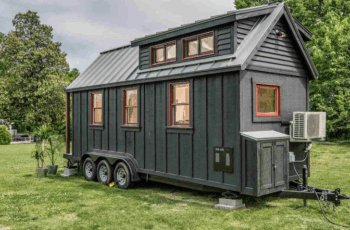
Maintaining a log cabin doesn’t have to come at the expense of the planet. In fact, taking a green approach to upkeep not only keeps your cabin in good shape but also helps reduce your environmental footprint. When you pick the right products—those that are kinder to nature—you’re doing more than protecting your retreat; you’re also preserving the environment it sits in.
For folks who want their log homes to age gracefully and stay eco-conscious, choosing smart materials matters. It’s not just about what works—it’s about what works without causing harm.
When it comes to sealants and finishes, skip the harsh stuff. There are water-based paints out there that get the job done without making the air inside your cabin unpleasant. They dry quickly, release fewer toxins, and many brands today offer a wide range of colors that look just as good as traditional options. Another good choice? Natural wood oils or waxes. These soak into the logs, shield against dirt and moisture, and let the wood’s original character shine through.
Pests are another common concern for log cabin owners. The good news is, you don’t need heavy-duty chemicals to keep them out. Essential oils like peppermint or tea tree oil do a surprisingly good job when mixed with water and sprayed around entry points or along walls. You can also try using natural deterrents like garlic or rosemary infusions. Some people even use beneficial bugs—yep, bugs that eat the bad ones—so your pest control doesn’t mess with the environment.
Insulation is one area where people often overlook eco-options, but it’s worth paying attention to. Wool, recycled denim, or even hemp can keep your place warm in winter and cool in summer. They’re breathable, renewable, and often perform just as well as conventional materials—sometimes better. If you’re leaning toward foam, check out the versions made from plant-based oils or other renewable inputs; some are impressively low on VOCs and high on performance.
Now, let’s talk cleaning. That bottle of all-purpose cleaner under your sink might be doing more harm than good. A simple mix of vinegar and water can work wonders on surfaces, and baking soda is a great option for scrubbing. You can even add a few drops of lemon or lavender oil for a fresh scent. To go a step further, swap out disposable wipes and plastic brushes for reusable cloths or biodegradable scrubbing tools made from natural fibers.
All of these small shifts add up. Choosing greener options isn’t about being perfect—it’s about making thoughtful decisions that support a healthier space and a more sustainable world. Whether you’re maintaining your cabin inside or out, the right materials can help keep things beautiful while doing good behind the scenes.


